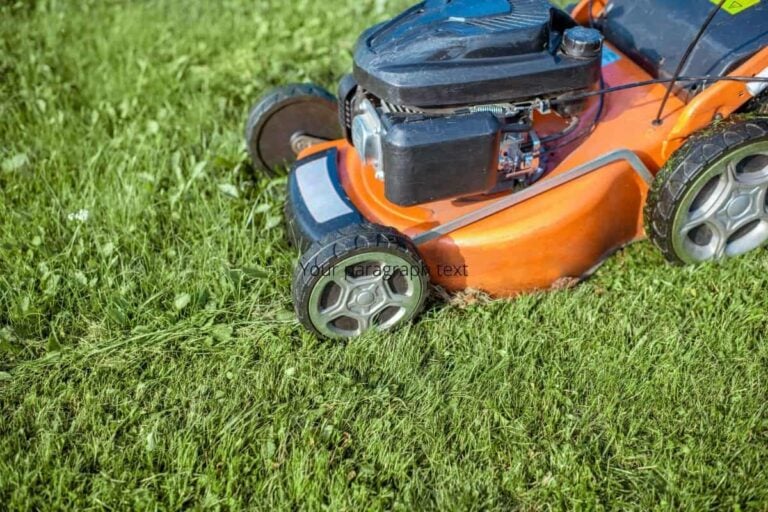Sago Palm Tree – How To Grow Cycas Revoluta In Your Garden
Sago palm tree, or Cycas Revoluta, is one of the most widespread decorative plants. A beautiful palm tree aspect and robustness make this plant ideal to cultivate in your flower garden or yard. But what should you know about it?
If you’re tempted to grow Cycas Revoluta in your garden, this guide is for you. Learn how to propagate and grow beautiful sago palm trees.
Sago Palm Tree: General Characteristics
The genus Cycas belongs to the family Cycadaceae and includes very old plants that have retained their characteristics over time. They are native to tropical Asia, Polynesia, East Africa and Australia.
The appearance and shape of sago palm trees are reminiscent of the palms. The plant is formed by a central trunk on top of which there is a tuft of pinnate leaves formed by numerous “needle” leaves. Each leaf grows from a central stern and assumes a more or less curved shaped according to the species.
A peculiarity of all species belonging to the genus Cycas is that they are dioecious species. In other words, there are male and female plants that bear only female or male flowers. Due to this, the species relies on external aid for pollination.
Since both male and female plants look exactly alike, it’s only possible to say which is which by analyzing the flowers. The male flowers, called microsporophylls, are inserted in a spiral on an elongated axis forming a long bunch with pollen bags.

The female flowers are called macrosporophylls and are also gathered in a bunch that grows at the top of the stem in a dense aggregate of petals that protect the eggs.

In nature, the plants are pollinated by wind or insects. In nurseries, gardeners usually harvest the mature make cone and shake it above the female flower bunch several times a day until the female flowers close, a sign they have been pollinated.
The resulted fruit is a false drupe that bears a large reddish-brown seed. The fruit has a long maturation process, developing slowly during the summer. If you want to propagate Cycas Revoluta from the seed, harvest the fruit in late winter or early summer, when it turns from pale yellow to orange-red.
Sago palm tree grows in pots and flowerbeds and it thrives indoors too, although it usually doesn’t bloom when grown in an enclosed space.
How To Grow Sago Palm Tree
Cycas revoluta is native to Indonesia, China, and Japan, and the plant reflects all typical characteristics of the genus.
In a temperate climate, the plant rarely exceeds 90ft in height when grown in the garden, while indoor plants remain short due to the limited space offered by the pot.
Sago Palm Tree: Cultivation
Cycas is easy to grow and do not require special precautions. The plant thrives in temperatures between 14 and 104°F and enjoys the sunshine, although all cycas adapt easily to different climates and situations as long as there is sufficient light provided.
A thing sago palm tree doesn’t like is the air currents, although the plant enjoys the fresh air.
When grown in a pot, it is recommended to more Cycas Revoluta outdoors during the summer months, in a place sheltered from direct sunlight.
A thing to keep in mind is that this plant has a slow growth rate. In the garden, the trunk grows about 1inch a year on average. When grown indoors or in a pot, the plant has an even slower growth rate and for this reason, the plant is often used for the realization of bonsai trees.
To enhance growth, it is recommended to eliminate the flowers before they reach maturity. In this way, the energy used for the production of fruit and seeds will be used to promote growth.
Sago Palm Tree: Water Needs
Sago palm tree needs a lot of water and should be watered immediately if the soil dries. Irrigation frequency depends on the temperature and exposure. If the plant is fully exposed to the sun and the soil dries up quickly, you should water it more often.
A thing to pay attention to is the drainage. Sago palm tree needs a lot of water but doesn’t tolerate water stagnation.
How To Transplant A Sago Palm Tree
Because Cycas Revoluta grows very slowly, repotting or transplanting is done every 3 to 4 years, when the roots have occupied all the space in the pot. Transplanting should only be conducted in spring or early summer in pots larger than the previous one but not too large, because a too large vase would favor a greater development of the roots in the detriment of the aerial part.
In terms of land, sago palm tree isn’t particularly demanding. The plant grows almost everywhere as long as the soil is fertile and well-draining because the plant doesn’t tolerate water stagnation. Potting soil is usually sufficient to grow Cycas in a pot, as for the garden, the best soil is composed of fertile soil, peat, sand, and perlite.
When grown in a pot, it’s recommended to place a layer of pebbles or river stones on the bottom of the pot to favor the draining of excess water.
How To Fertilize Sago Palm Tree
Again, because cycas is a very slow growing plant, its fertilization should be carried out every 6 to 8 weeks, starting from spring and throughout the summer. Suspend fertilization during fall and winter, and reassume it in the next spring.
Use a liquid fertilizer rich in macroelements such as nitrogen, phosphorus, potassium, and microelements like magnesium, iron, manganese, copper, zinc, boron, and molybdenum. All these nutrients are essential for a balanced development of the plant, and there are many fertilizers for Cycas Revoluta on the market.
Alternatively, blend compost into the soil and water the plants with a blend of water and manure tea once a month.
Flowering Of Cycas Revoluta
Young sago palm trees don’t flower; in broad terms, the plant has to be about fifteen years old to produce flowers. Cycas blooms in late spring and, under optimal cultivation conditions, it makes a flower every two to three years.
How To Prune Sago Palm Tree
Sago palm trees need very little maintenance. Pruning is only necessary to remove old leaves which are damaged or that have turned yellow. Cut them as close as possible to the trunk.
It is essential to eliminate damaged or yellow leaves immediately because they can carry diseases. Their elimination also stimulates the production of new leaves.
You can either use pruning shears or remove dead leaves with your hand, by grabbing and pulling them down.
How To Propagate Cycas Revoluta
Sago palm tree propagates from seeds or from suckers.
Propagating Cycas Revoluta From Seeds
When starting your plant from seeds, the best time to sow cycas is between early spring and early summer. You can start the plants earlier by propagating the seeds in pots, in a greenhouse.
The first thing to do is to select a fertile seed. To do this, put all seeds in a basin of lukewarm water and see if they float. Floating seeds have not been pollinated and they will never turn into a plant. This immersion technique also serves to hydrate the shell of the seeds, allowing plants to germinate faster.
Leave the seeds to soak for at least three days, changing the water daily, then remove the outer red-orange shell and leave them to dry for a couple of days. If the skin doesn’t peel off easily, leave it on the seed and sow it with the skin on.
Sow Cycas Revoluta in a soil consisting of sand or perlite and peat in the proportion of 1:1. Dig a hole of about 5 inches deep, place the seed in the hole and cover with potting soil.
Water immediately after sowing and then each time the surface is dry. Proper watering involves watering first, let excess water to drain, then water a second time to ensure all soil is completely wet.
The seed needs between three and nine months to germinate. When the seedlings get about 5 inches high, transplant in 5-inch pots then increases the size of the pot by about 5 inches every year.
Propagating Cycas Revoluta From Pups
Propagating sago palm tree from pups can be done at any time of the year by removing the basal shoots formed at the base of the plant or along the trunk. Leave them to dry for about a week, then transplant in well-draining soil.
The pots should be larger than those for the seeds. Typically, a pot of about 10 inches in diameter is sufficient to start with. Adjust the watering needs of the plant so that the soil is almost dry between one irrigation and another. When the roots emerge, typically after about seven months, you can start watering more abundantly.
Don’t fertilize the pups until the plants developed their second set of leaves. At this point, you can transplant them into larger pots and start using a fertilizer. Don’t keep new plants in direct sunlight, but ensure there is sufficient light to avoid the growth of leggy sago palm trees.
Common Sago Palm Tree Parasites And Diseases
One of the most common affections of sago palm trees are the brown spot leaves. This symptom is indicative of insufficient watering and it can also appear when the plant is exposed to very low temperatures.
The remedies are to either water more abundantly or more the plant in a greenhouse or indoors during winter.
If the leaves turn yellow, the symptom may indicate excessive watering or excessive fertilizing. Adjust accordingly and remove damaged leaves.
Brown spots on the lower part of the leaves could mean the presence of a cochineal infection, in particular with brown cochineal or floury cochineal. Make sure to identify the parasite before proceeding with the cure, because different types of cochineal need different treatments.
To cure the affected plants, remove the parasite with a cotton swab soaked in alcohol. If the plant is large and potted, wash it with abundant running water and neutral soap. Gently rub each leave with a sponge to remove parasites, then rinse with abundant clean water to remove all soap. For large and established plants grown in the garden, you can use specific pesticides to remove the parasites.
Sago Palm Tree: Curiosities
Cycas revoluta is one of the oldest plants on earth. Cycas fossils have been identified in Upper Trias layers dated about 250 million years ago. From the Cretaceous period have also been identified remains of sago palm trees.
We can consider sago palm trees “living fossils”. Studies conducted on these plants have allowed scientists to understand plant fossils, including those of extinct plants. Sago palms have survived geological cataclysms but above all, they adapted and survived man-caused disasters.
The oldest Cycas Revoluta lives in the Huntington Gardens in San Marino, California. This splendid centenary exemplar measures over 16ft in height and the trunk’s diameter measures over 13ft.
You may also read our article about Ravenea Majesty palm.


